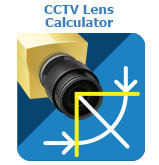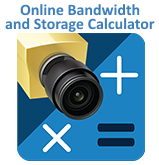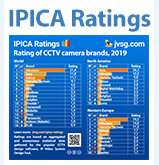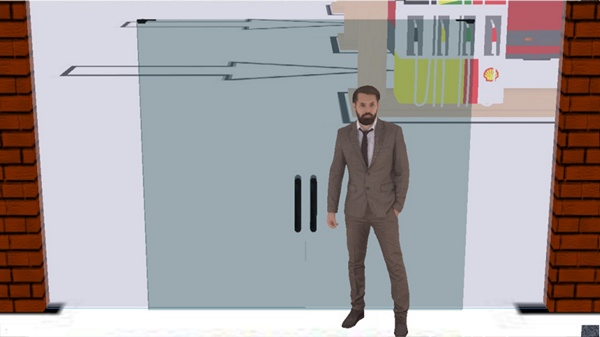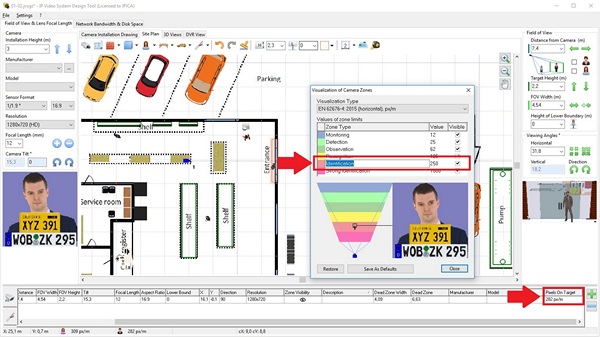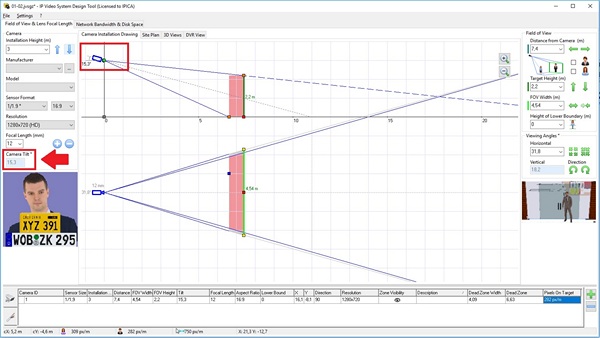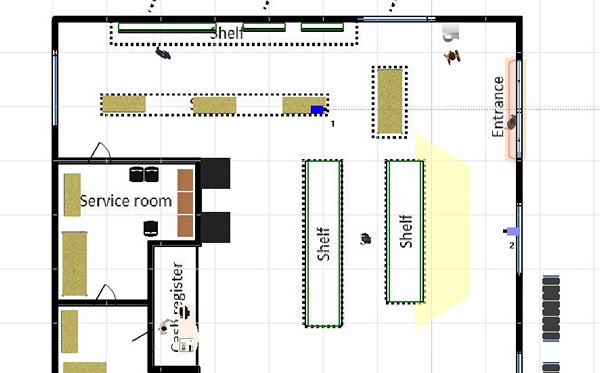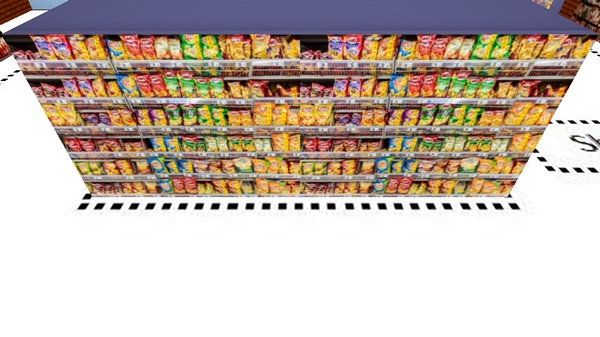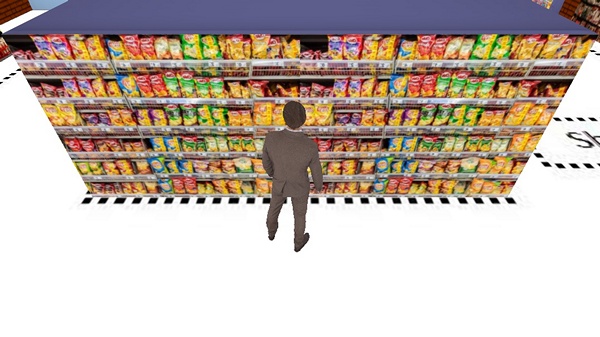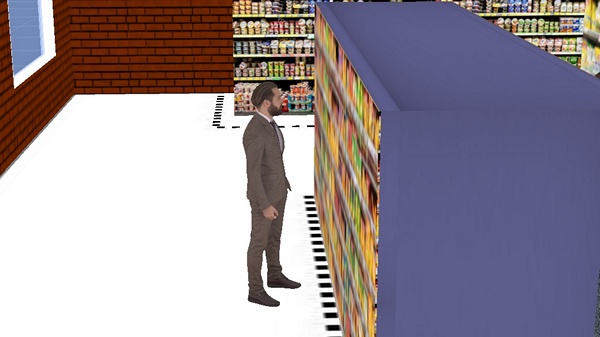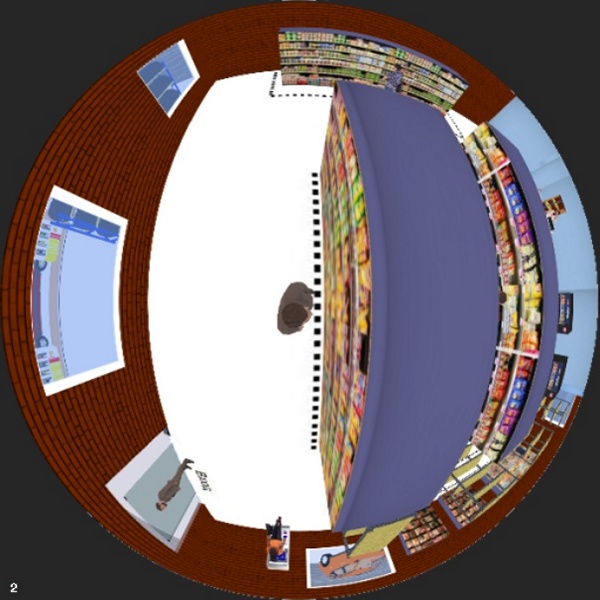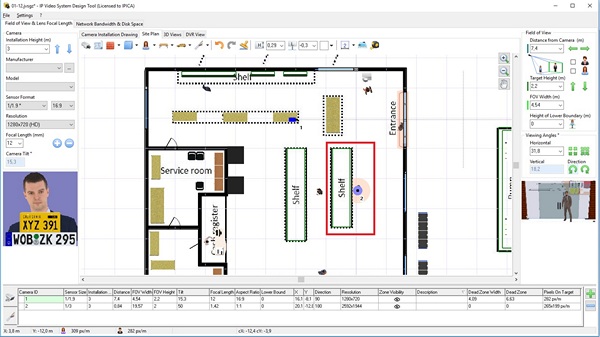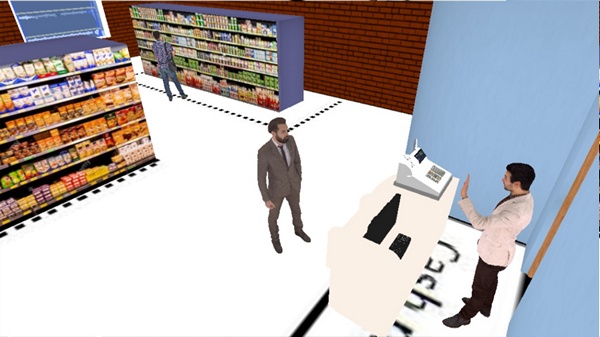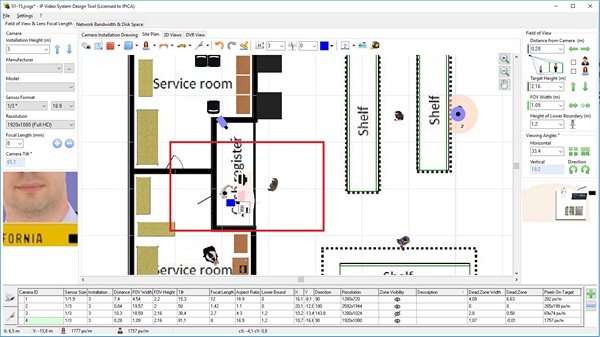Case #1: How many cameras are necessary to indicate that a shoplifter has stolen a product from a particular display cabinet?
The number of thefts of expensive items has increased in a major retail chain store. It is necessary to expose dishonest shoppers in order to blacklist them using the retailer’s security service and turn them over to law enforcement. The use of anti-theft systems has proven to be ineffective as people spend a long time looking over and checking the label on these particular types of items and disabling the RFID label is no challenge for a professional thief. Therefore, the issue needs to be solved by means of a video surveillance security system.
Please review the layout of the store above which indicates the clients’ entrance, goods display zones that need to be controlled, and the checkout area.
- What would be the minimal number of cameras required? Please justify the need for each.
- What are the specs of each camera crucial to fulfilling the task at hand? Please explain your choice.
In order to determine the observation zones and the minimal number of cameras necessary, let’s compose the logical chain of facts that require confirmation from the CCTV system:
- The customer was in the store at the moment of theft.
- The customer took an item from the display cabinet and did not put it back.
- The customer did not pay for the item at the cash register.
It is only when all three of these facts are confirmed that the retailer’s security service can launch an investigation and enter this person’s name into the customer stop list database during an obligatory check-up at the exit of any of the chain’s locations.
How do you prove the person was present in the store at the moment of theft?
For this purpose, the shopper has to be unambiguously identified when entering the store. For example, the criteria described in the European EN 62676-2015 standard can be used.
As can be seen from the screenshot, a resolution of 720P with a focal length of 12 mm and a sensor format 1/1.9” is adequate for such identification. A long-focus objective allows us to significantly decrease the angle of inclination of the camera to the horizon, offering a much sharper frame capture for the portrait of the entering shopper.
In case positive identification is needed, the camera’s resolution would have to be increased to 8 MP, but that is probably excessive and wouldn’t make sense.
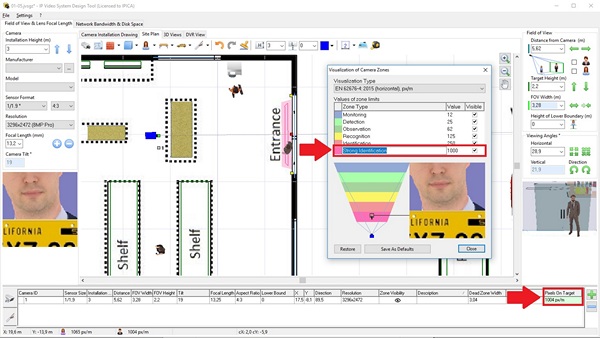
How do you prove that the shopper took an item from the display cabinet and did not put it back?
This requires proof of several assumptions:
- The shopper was next to the cabinet with the item in question.
- The shopper took the item into his hands.
- The shopper did not place the item back on the shelf.
A typical mistake when approaching the resolution of this problem is to underestimate the shopper’s ability to obscure the target (the item). As a result, we get incorrectly-placed cameras:
All is apparently well; the whole display cabinet is within the control zone of camera #2:
But as soon as a shopper appears, his body obscures the goods and we cannot positively affirm whether he has taken the item in his hands (and if so, whether he returned it back to the shelf).
For this reason, it would be appropriate to place the camera in such a location that would provide an observation zone of the area between the cabinet/shelf and the shopper. Whether from the side:
Or from the top:
Picture 1. Security cameras in stores
In the latter (second) case, if the ceiling is too low, it is preferable to use an ultra-short-focus objective, such as a fish-eye. The advantages of the latter method include making the obscuring of the object by the shopper practically impossible. No matter how many people stand next to the display cabinet, we will be able to clearly view the actions of every one of them.
I would like to point out that we would not require high-image resolution for this task (that’s true if the display cabinet contains known goods). The only fact of importance is that the shopper has taken an item off the shelf and did not put it back. We have already performed positive identification of the shopper using Camera #1. Now, knowing the time of his entry into the store and his appearance (color and cut of clothing, style of walking, etc.) we are capable of pinpointing the person on Camera #2 with a high degree of certainty.
How can it be proven that the shopper did not pay for the item he has taken from the shelf?
Let’s analyze it in reverse. In order to pay for the item, it is necessary to approach the cash register, present the item, and pay for it. Therefore, it is necessary for us to prove that at least one of the actions listed above cannot be proven by camera record.
First, we check – did the shopper ever approach a cash register?
For this, we need nothing more than a wide-angle camera overseeing the checkout area:
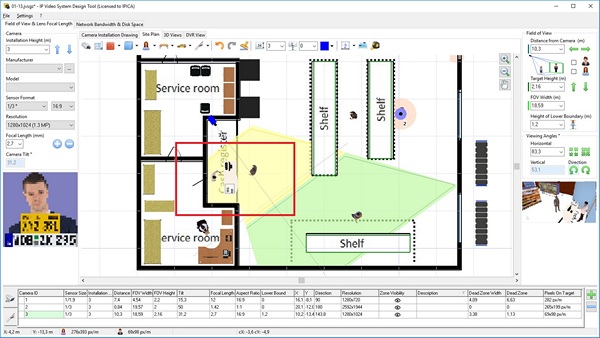
Then we check – did the shopper pay for the item he has taken from the shelf?
This issue is best resolved by integrating the video surveillance system with the cash registers. Otherwise, it is also possible to manually synchronize the time of the action with the data logged in the cash register.
The resolution of the camera must ensure we can easily observe the cashier’s actions and the reading of the POS terminal.
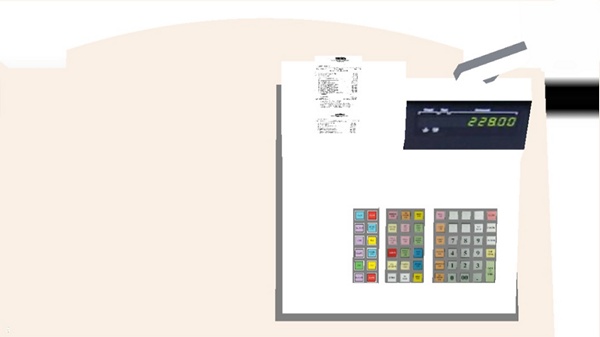
Conclusions
The solution to this problem requires 3 or 4 cameras for monitoring 1 display cabinet. The analysis of data provided by these cameras would prove that theft from the store did, in fact, occur with a very high degree of probability.
That said, the location and focal length of cameras (along with the matrix size) play a more important role in solving the problem than the maximum resolution of the cameras.
Download a source file for IP Video System Design Tool 9.2 software for this article [JVSGZ, 4 MB]
Next article: Installing Security Cameras in Corridors


